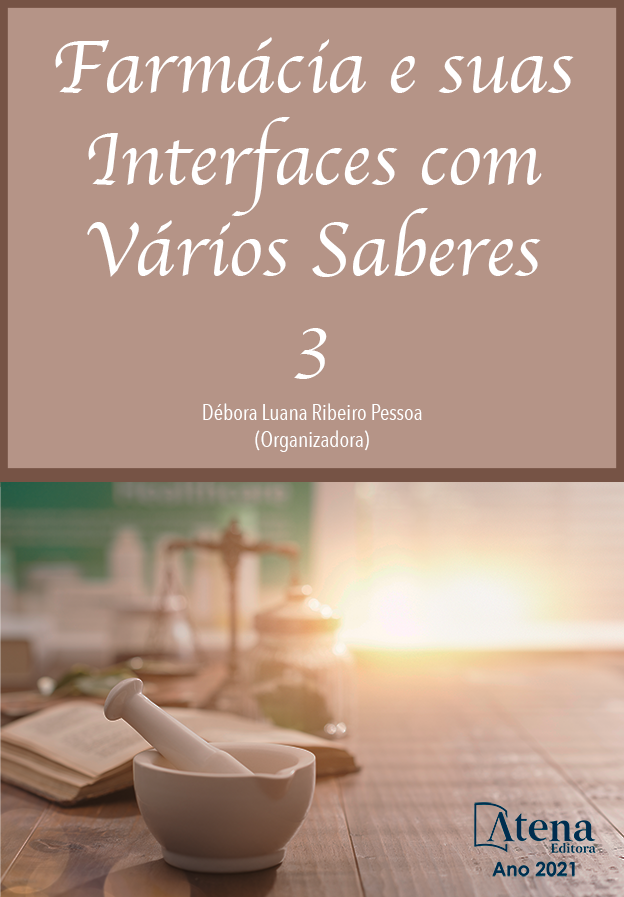
COMPOSIÇÃO QUÍMICA, ATIVIDADE ANTIBACTERIANA E EFEITO SINÉRGICO DO ÓLEO ESSENCIAL DE ALPINIA ZERUMBET (COLÔNIA)
Alpinia zerumbet (Pers.) B.L. Burtt & R.M. Sm., conhecida popularmente por colônia, espécie da família Zingiberaceae, típica de regiões tropicais e subtropicais, é uma planta medicinal muito utilizada devido suas propriedades diurética, vermífuga, purgativa e estomáquica. O objetivo deste trabalho foi avaliar o efeito antimicrobiano e modulador do óleo essencial das folhas de A. zerumbet (OEAz). O óleo essencial foi obtido de folhas frescas da planta com a técnica de arraste a vapor. A caracterização química dos constituintes foi feita utilizando a CG-EM. Para os ensaios microbiológicos foram utilizadas quatro cepas microbianas: Pseudomonas aeruginosa ATCC 9027, Staphylococcus aureus ATCC 6538P, Klebsiella peneumoniae ATCC 10031, Escherichia coli ATCC 25922. A determinação da Concentrações Inibitória (CIM) e Letal Mínima (CLM) foram determinadas por método de diluição em caldo e o efeito modulador do OEAz na atividade de antimicrobianos (ATM) de uso clínico foi realizada pelo método de difusão em ágar modificado. O OEAz inibiu todas as cepas testadas. A cepa S. aureus ATCC 6838P foi a mais sensível (CIM de 0,312 mg/mL). As cepas P. aeruginosa ATCC 9027, K. pneumoniae ATCC 10031, E. coli ATCC 25992 apresentaram valores de CIM iguais a CLM. O OEAz apresentou efeito sinérgico à atividade antimicrobiana de Claritromicina sobre a cepa E. coli ATCC 25922 e a Polimixina B sobre P. aeruginosa ATCC 9027. Os resultados obtidos sugerem que o OEAz apresenta uma boa atividade antimicrobiana e efeito modulador específico sobre cada antimicrobiano testado.
COMPOSIÇÃO QUÍMICA, ATIVIDADE ANTIBACTERIANA E EFEITO SINÉRGICO DO ÓLEO ESSENCIAL DE ALPINIA ZERUMBET (COLÔNIA)
-
DOI: 10.22533/at.ed.8212112067
-
Palavras-chave: Plantas medicinais, extratos vegetais, Staphylococcus aureus
-
Keywords: Medicinal plants, plants extracts, Staphylococcus aureus
-
Abstract:
Alpinia zerumbet (Pers.) B.L.Burtt & R.M.Sm., popularly known as colony, a species of the Zingiberaceae family, typical of tropical and subtropical regions, it is a medicinal plant widely used due to its diuretic, vermifugal, purgative and stomatal properties. The objective of this work was to evaluate the antimicrobial and modulatory effect of the essential oil of the leaves of A. zerumbet (OEAz). The essential oil was obtained from fresh leaves of the plant with the technique of steam dragging. The chemical characterization of the constituents was done using GC-MS. For microbiological assays, four microbial strains were used: Pseudomonas aeruginosa ATCC 9027, Staphylococcus aureus ATCC 6538P, Klebsiella pneumoniae ATCC 10031, Escherichia coli ATCC 25922. The determination of Minimum Inhibitory Concentrations (MIC) and Minimum Lethal Concentrations (MLC) were determined by dilution method in broth and the modulating effect of OEAz on the activity of antimicrobials (ATM) for clinical use was carried out using the modified agar diffusion method. OEAz inhibited all tested strains. The strain S. aureus ATCC 6838P was the most sensitive (MIC of 0.312 mg / mL). The strains P. aeruginosa ATCC 9027, K. pneumoniae ATCC 10031, E. coli ATCC 25992 showed MIC values equal to MLC. The OEAz showed a synergistic effect to the antimicrobial activity of Clarithromycin on the E. coli strain ATCC 25922 and Polymyxin B on P. aeruginosa ATCC 9027. The results obtained suggest that OEAz has good antimicrobial activity and a specific modulating effect on each tested antimicrobial.
-
Número de páginas: 15
- Anne Caroline Duarte Moreira
- Gleilton Weyne Passos Sales
- Suelen Carneiro de Medeiros
- Fabrício César Fernandes
- Andressa Hellen de Morais Batista
- Hilania Valeria Dodou Lima
- Mary Anne Medeiros Bandeira
- Nádia Accioly Pinto Nogueira


